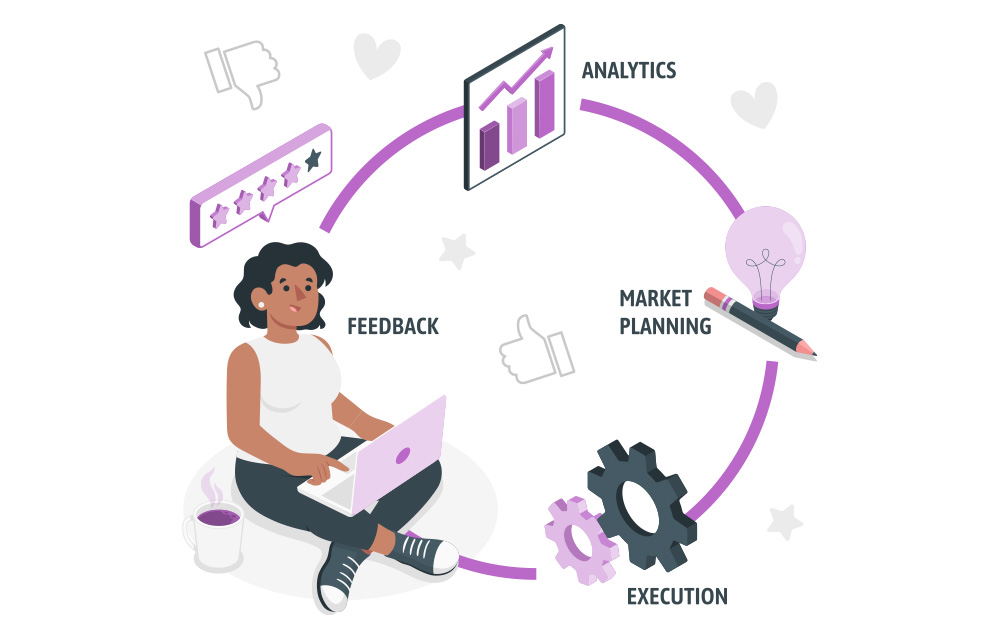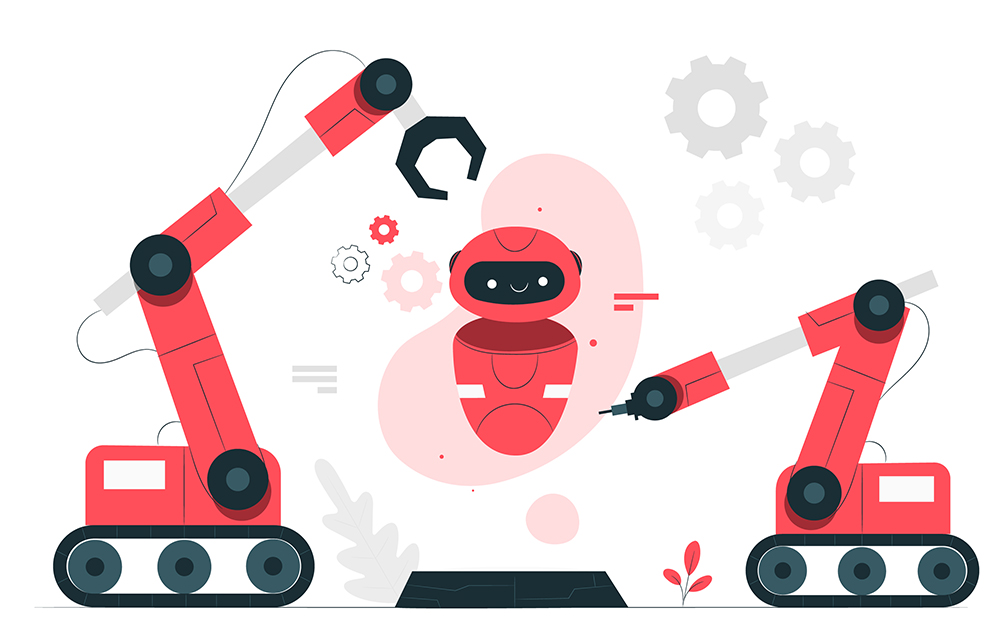It's important to acknowledge the vital role played by administrative professionals in the success of any busi...
Brickwork Blogs


Introduction
Feedback loops are essential processes that drive growth and improvement across various fields.
At their core, feedback loops involve using the outputs of a system as inputs to refine future performance. This continuous exchange of information allows individuals and organizations to learn, adapt, and enhance their strategies.
These loops are crucial in personal development, business, and education, helping to improve performance and tailor approaches to meet specific needs.
In this blog post, we’ll explore the nature of feedback loops, their importance in fostering continuous improvement, practical steps for implementation, and real-world success stories. By the end, you’ll know how to leverage feedback loops to promote growth and innovation. Let’s dive in!
Understanding Feedback Loops
Feedback loops are processes in which the outputs of a system are circled back and used as inputs, creating a continuous cycle of improvement and adaptation. This concept is vital in various contexts, allowing individuals and organizations to learn from their experiences, make adjustments, and enhance performance over time. Let’s break down the key components of feedback loops and explore how they function in real-world scenarios.
Key Components of Feedback Loops
Real-World Examples
1. Agile Software Development In the realm of software development, Agile methodology exemplifies a robust feedback loop. Teams work in short cycles called sprints, during which they develop a portion of the software. At the end of each sprint, they hold a retrospective meeting where they evaluate what went well, what didn’t, and how processes can be improved.
This feedback directly informs the next sprint's planning, allowing teams to make iterative improvements based on user feedback and team performance. As a result, the final product is more aligned with user needs and expectations, leading to higher satisfaction and better functionality.
2. Educational Assessment In education, feedback loops are integral to effective teaching and learning. For example, a teacher may assess students' understanding through quizzes and assignments (the input). After evaluating the results, the teacher identifies areas where students struggle (the process) and adjusts instructional methods or provides additional resources (the output).
This tailored approach allows the teacher to better meet students' needs. Moreover, as students receive feedback on their progress, they can adjust their study habits and strategies, creating a self-reinforcing cycle of learning and improvement.
Importance of Feedback Loops
Feedback loops are crucial for fostering a culture of continuous improvement in both individuals and organizations. Here’s why they matter:
1. Enhanced Performance
Feedback loops provide valuable insights that help identify strengths and weaknesses. By regularly evaluating performance and implementing changes based on feedback, individuals and teams can continually refine their skills and processes, leading to better outcomes.
2. Increased Engagement and Motivation
When feedback is actively sought and valued, it encourages participation and ownership. Individuals feel more engaged when they see their input led to tangible changes, fostering a motivated workforce that is committed to growth.
3. Innovation and Adaptability
In rapidly changing environments, feedback loops enable organizations to stay agile. By continuously gathering insights from customers, employees, and market trends, businesses can adapt their strategies and innovate, ensuring they remain competitive and relevant.
4. Improved Communication
Establishing feedback loops promotes open communication channels. When feedback is encouraged, it breaks down silos and fosters collaboration, creating an environment where ideas and concerns can be shared freely.

Implementing Feedback Loops
Creating effective feedback loops requires intentional strategies and practices. Here are key steps to successfully implement them:
1. Establish Clear Channels for Feedback
Set up structured ways for gathering feedback, such as surveys, suggestion boxes, or regular check-in meetings. Ensure that these channels are accessible and user-friendly, making it easy for individuals to share their thoughts.
2. Encourage Constructive Feedback
Foster an environment where constructive feedback is welcomed and appreciated. Provide training on how to give and receive feedback effectively, emphasizing the importance of being specific, respectful, and solution oriented.
3. Act on Feedback
Collecting feedback is only valuable if it leads to action. Regularly analyze the input received, prioritize areas for improvement, and implement changes based on insights. Communicate these changes back to the team to demonstrate that their feedback is taken seriously.
4. Create a Feedback Culture
Encourage a culture that values ongoing dialogue and continuous improvement. Recognize and celebrate instances where feedback leads to positive changes, reinforcing its importance and motivating others to participate.
5. Monitor and Iterate
Feedback loops should be dynamic. Continuously monitor the effectiveness of implemented changes and be willing to adapt. Regularly revisit the feedback mechanisms to ensure they remain relevant and effective.
Challenges and Solutions
Implementing feedback loops can come with its own set of challenges. Here are some common obstacles and practical solutions to overcome them:
2. Fear of Criticism
Challenge: Individuals may hesitate to provide honest feedback due to fear of negative consequences or backlash.
Solution: Cultivate a safe environment by promoting a growth mindset. Encourage open discussions about the value of constructive criticism and assure anonymity when possible. Highlight positive outcomes from past feedback to build confidence.
2. Lack of Time
Challenge: Busy schedules can make it difficult to prioritize feedback sessions or follow up on feedback received.
Solution: Integrate feedback practices into existing routines, such as during regular team meetings or project debriefs. Utilize technology, like quick surveys or digital feedback tools, to streamline the process and make it more efficient.
3. Ineffective Communication
Challenge: Feedback may not be conveyed clearly, leading to misunderstandings and frustration.
Solution: Provide training on effective communication skills for both giving and receiving feedback. Use specific examples and encourage active listening to ensure clarity and comprehension.
4. Resistance to Change
Challenge: Some individuals may resist changes suggested by feedback, preferring to stick with familiar processes.
Solution: Engage team members in the change process by involving them in decision-making and implementation. Share data or case studies that illustrate the benefits of the proposed changes, and celebrate small wins to encourage acceptance.
Also Read: What is the Role of Process Improvement in Maximizing Efficiency?
Conclusion
Feedback loops are vital mechanisms that drive continuous improvement across various contexts. By enhancing performance, fostering engagement, and promoting innovation, they empower individuals and organizations to adapt and thrive in a dynamic environment. Implementing effective feedback loops requires clear communication, a supportive culture, and a commitment to acting on insights.
Embracing this iterative process not only enhances capabilities but also cultivates a proactive mindset focused on growth and excellence. Start leveraging feedback loops today to unlock the full potential of your team and drive lasting success.


